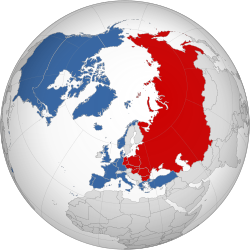The examples and perspective in this article deal primarily with the United States and United Kingdom and do not represent a worldwide view of the subject.(July 2024) |

A post-war or postwar period is the period immediately following the end of a war. The term usually refers to a varying period of time after World War II, which ended in 1945. A post-war period can become an interwar period or interbellum, when a war between the same parties resumes at a later date (such as the period between World War I and World War II). By contrast, a post-war period marks the cessation of armed conflict entirely.
